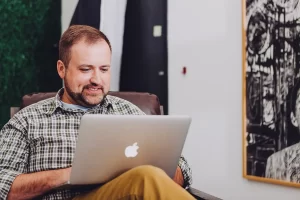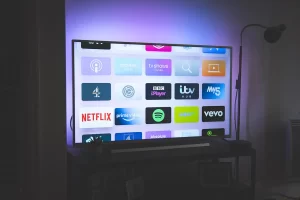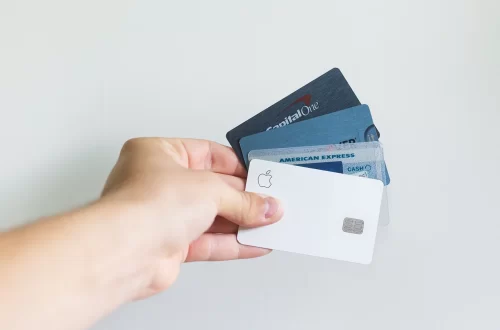
How to Reduce Your Television and Internet Bills
With the rise of technology and the increasing demand for entertainment and internet services, television and internet bills can become a significant portion of your monthly expenses. But don’t worry, you don’t have to sacrifice your favorite shows or internet speed to lower your bills. Here are some ways to reduce your television and internet service bills.
Know Your Service Options
In today’s world, there are more options for television service than ever before. From cable and satellite to streaming services and free over-the-air signals, it can be difficult to determine which option is the best for you. Let’s begin with the different types of television service and help you make an informed decision about which one is right for you.
Television Services
Cable Television
Cable television is one of the most popular forms of television service. It offers a wide selection of channels, including local, regional, and national networks, as well as premium channels and on-demand content. Cable TV also offers the ability to record live TV, watch shows and movies on-demand, and access to the internet.
Pros:
- Wide range of channels and programming options
- Relatively stable and consistent signal quality
- Ability to bundle with other services (such as internet or home phone)
- Technical support from the provider
Cons:
- Monthly cost can be expensive
- Taxes and fees are often buried in the service agreement
- Limited flexibility with packages and pricing options
- Customer service can be poor
- Equipment (such as cable boxes) often have separate monthly rental fees
- Some companies require a long-term contract
Satellite Television

Satellite Television Service is a type of television service that delivers programming to viewers via a network of satellites. Subscribers receive a satellite dish, typically installed on their roof or property, which receives signals from the satellites and delivers them to a set-top box in the home.
Satellite television service provides a wide range of channels and programming options, including local networks, premium channels, and international programming. One of the main benefits of satellite television service is that it is available in areas with poor cable TV service or no cable TV service at all.
Pros:
- Wide range of channels and programming options
- Good coverage in rural areas where cable may not be available
- Available in areas with poor or no cable TV service
- Ability to bundle with other services (such as internet or home phone)
Cons:
- Monthly cost can be expensive
- Limited flexibility with packages and pricing options
- Weather conditions can affect the signal quality
- Equipment (such as satellite dish) can be difficult to install and requires a satellite dish to be installed on the property
- May not be an option for renters (check with your landlord)
Streaming Services That Include Live TV
Streaming services, such as Sling TV, YouTube TV, and Hulu + Live TV, offer the ability to stream live TV, movies, and original content over the internet. These services are becoming increasingly popular because they offer a wide selection of channels at a fraction of the cost of cable or satellite TV. They also offer the ability to stream content on multiple devices and often come with the ability to record live TV.
Pros:
- Lower monthly cost compared to cable or satellite TV
- Ability to access content on a variety of devices (smart TVs, streaming devices, mobile devices)
- Convenient and easy-to-use interface
- No long-term commitment or contracts
Cons:
- Limited programming options compared to traditional cable and satellite TV
- Limited local channels
- Depends on internet connectivity
- Some services have restrictions on content due to licensing agreements
- Potential for buffering and lag during high-traffic times
- Can consume a lot of your internet bandwidth if you watch a lot of television
Free Over-the-Air Digital Signals
Free over-the-air digital signals offer basic television programming without the need for a cable or satellite subscription. These signals can be picked up with an antenna, and the channels offered include your local channels, many of whom are major network affiliates.
Pros:
- No monthly cost
- Access to a local channels which often include most of the major broadcast networks (ABC, NBC, CBS, etc.)
- No equipment rental fees
Cons:
- Limited programming options compared to traditional cable and satellite TV
- Limited coverage in some areas. You must be within range of broadcast transmitters. Often not available in rural areas.
- Requirement to purchase an antenna and related equipment
- Reception may be affected by weather conditions or other environmental factors.
When shopping around for television service, consider your needs, budget, and location to determine which option is right for you. Whether you’re looking for a wide selection of channels, a low cost, or the ability to stream content on multiple devices, there is a television service option that will meet your needs.
Internet Services
In today’s digital world, having a reliable internet connection is essential. Whether you’re working from home, streaming movies and TV shows, or just browsing the web, having fast and reliable internet is crucial. But with so many options for home internet service, it can be difficult to determine which one is right for you. Now, let’s take a look at the available options for home internet service and help you make an informed decision.
Cable Internet
Cable internet is one of the most popular options for home internet service. It is provided by cable TV companies and uses the same coaxial cable as your cable TV service. Cable internet offers fast speeds and is available in most areas. The downsides of cable internet include the cost, the need for a cable modem, and the fact that the speed can slow down during peak hours. The service provider will rent you a cable modem for an added fee ($10 to $20 per month is typical). Often it is cheaper in the long run to simply buy a cable modem, as they can often be purchased anywhere between $40 and $200. You will need to ensure that it is compatible with your provider, however.
Pros:
- Wide availability: Cable internet is available in most areas and is one of the most widely available types of home internet service.
- High speeds: Cable internet offers some of the fastest internet speeds, which makes it ideal for heavy internet users, such as gamers, streaming video and audio, and large file downloads.
Cons:
- Cost: Can be expensive if not bundled with your television service.
- Limited choice in providers: Often there is only one cable company servicing a particular area.
- Limited reliability: Cable internet service can be subject to outages and slowdowns during peak usage times, such as early evenings and weekends. Service outages are more common late at night.
- Cable modem required: You will either need to rent a modem from the provider (often for an additional monthly fee) or buy your own.
- Data caps: Some cable internet providers have data caps, which limit the amount of data that can be used in a given billing period. Unlimited data is often available, but for a higher rate.
DSL Internet
DSL (digital subscriber line) internet is another popular option for home internet service. It is provided by traditional telephone companies and uses the same phone lines as your telephone service. DSL internet is typically less expensive than cable internet and is widely available in most areas. The downsides of DSL internet include slower speeds than cable internet, and the speed can be affected by the distance from the telephone company’s central office.
Pros:
- Affordable: DSL internet service is often one of the most affordable types of home internet.
- Wide availability: DSL internet is widely available, especially in urban areas.
- Reliable: DSL internet service is typically more reliable than cable internet, as it is often not subject to the same slowdowns and outages that can occur with cable internet.
Cons:
- Slow Speeds: DSL internet speeds are usually slower than cable internet, which can make it less suitable for heavy internet users.
- Limited availability in rural areas: DSL internet service may not be available in rural areas or areas far from a central office.
- Speed affected by other users: Your internet speed can be affected by the other user traffic on the service at any given time, particularly during peak hours.
Cellular Internet
Cellular internet is a newer option for home internet service. It is provided by cellular companies, such as Verizon, AT&T and T-Mobile, and uses the same network as your cellular phone service. Cellular internet is available in most areas and is often faster than DSL internet. The downsides of cellular internet include the cost, the need for a cellular modem, and the fact that the speed can be affected by the strength of the cellular signal.
Pros:
- Wide Coverage: Cellular internet uses the provider’s cellular network, which, for most carriers, has wide coverage in the United States. This means that customers can get fast and reliable internet services, even in rural areas that are not well-served by cable or fiber providers.
- Affordable: Many cellular home internet services are priced very competitively, which makes them affordable options for many people. This is especially true when compared to cable or fiber providers, which often have much higher prices.
Cons:
- Limited Speed: Cellular networks are usually fast and reliable, the speeds available through home cellular internet service may not be as fast as what you would get from a cable or fiber provider.
- Data Caps: Most cellular home internet services come with data caps, which limit the amount of data you can use each month. This can be problematic for people who use the internet a lot or who stream a lot of video.
- Signal Strength: The quality of service can be impacted by signal strength. If you live in an area with weak cellular signal, you may not be able to get the speeds and reliability you need.
- Interruptions in Service: If the network is congested, you may experience slower speeds or even interruptions in service.
- Limitations on Streaming: Some streaming services, such as Netflix and YouTube, may limit the quality of their video streams over cellular networks. This means that even if you have fast internet speeds, the video quality may be lower than what you would get over a cable or fiber connection.
Fiber Internet
Fiber internet is a newer option for home internet service. It is provided by fiber-optic companies and uses fiber-optic cable to provide internet service. Fiber internet is the fastest of all the options and is not affected by distance or weather conditions. The downsides of fiber internet include the cost, the limited availability, and the need for a fiber-optic modem.
Pros:
- Fast speeds: Fiber internet is one of the fastest types of home internet, providing high speeds for heavy internet users.
- Reliable: Fiber networks are highly reliable and not subject to the same outages and slowdowns that can occur with cable or DSL internet.
- Unlimited data: Many fiber internet providers do not have data caps, which allows for unlimited data usage.
Cons:
- Very Limited availability: Fiber internet is not available in many areas and is only available in areas where a fiber network has been installed.
- High cost: Fiber internet service is often more expensive than other types of home internet.
- Installation: Fiber internet installation can be more complicated than other types of home internet and may require a professional installation.
Shopping Around

While most areas only have one cable TV provider, satellite TV services are considered competitors to traditional cable television. Take the time to shop around and compare packages and prices from different providers. This can help you find a package that fits your budget and offers the channels and features you want. Even if satellite television is not a viable option for you, obtaining their pricing options may help in your negotiations with the local cable company. There are also streaming services that offer live television.
As with your television service, you should shop around and compare internet service rates as well. Be sure to factor in service speeds, reliability, and bandwidth limits. Don’t assume the offer includes unlimited internet bandwidth, be sure to ask about limits. Many provider have limits, but fail to tell you up-front, but instead bury that information within their service agreements.
Additionally, here are a few more things to consider:
- Be aware of actual service prices: The provider will most likely quote you a rate that does not include all the added fees and taxes. Be sure to ask what the total price will be.
Additionally, most providers will offer you a very attractive promotional rate. However, it’s important to factor in the regular rate once the promotion period is over. That great deal you think you got might end up coming back to haunt you in the end with an enormous regular rate. - Consider bundled services: Many providers offer bundled services, where you can get both TV and internet services at a discounted rate. This can be a great option if you’re looking to save money and simplify your billing process. However, don’t get talked into a bundle if you don’t actually need all the services included.
- Read the fine print: When comparing TV and internet services, be sure to read the fine print. This includes service agreements, terms and conditions, and any hidden fees. Again, bandwidth limitations are usually buried in the fine print. If you are planning to use a streaming service for the bulk of your television viewing, the bandwidth limitation is extremely important.
- Ask about installation fees: Some providers charge installation fees for setting up TV and internet services. Make sure to ask about these fees and compare them between different providers.
Negotiating

Another way to save money on your television and internet bills is by negotiating with your current provider. Call the customer retention department and let them know that you’re considering switching providers. They may offer you a lower rate to keep you as a customer. If you’re not satisfied with their offer, don’t be afraid to ask for more.
Negotiating with your television and internet service providers can be a great way to save money and get the best deal for your needs. Here are a few tips for negotiating with your TV and internet service providers:
- Contact the customer retention department: The customer retention department is usually responsible for keeping customers from cancelling their service, so they may be more willing to offer you a better deal to keep you as a customer. When you call your provider, you can ask to be transferred to the customer retention department and explain that you’re considering cancelling your service. They may be able to offer you a better rate or a special promotion to keep you as a customer. However, it’s important to keep in mind that this may not always work, but it’s worth a try.
- Know your current package: Before negotiating, make sure you know exactly what your current package includes and what you are paying for. This will help you understand what you can negotiate and what your service provider is able to offer.
- Be prepared to switch providers: If your service provider is not willing to negotiate your rate, be prepared to switch to another provider or at least be very convincing that you are willing to switch. This will give you more bargaining power, as your service provider may be more likely to offer discounts and promotions to keep you as a customer.
- Don’t volunteer information that undercuts your position: If you have very limited options for switching providers or rent your home and are tied to a specific provider, don’t volunteer this information. It is unlikely that the customer service agent has any idea that you have few options or they are your only option.
- Consider bundling services: As stated above in the “Shop Around” section, many providers offer bundled services, where you can get both TV and internet services at a discounted rate. This can be a great option if you’re looking to save money and simplify your billing process. However, don’t get talked into a bundle if you don’t actually need all the services included.
- Seek promotions: Keep an eye out for promotions and special offers from your TV and internet service providers. These promotions can be a great way to save money and get the best deal for your needs. Again, the customer retention department may be able to offer you a special promotion to keep you as a customer. Just be aware of the length of the promotional period and what the regular rate will be at the conclusion.
- Be polite and professional: When negotiating with your service providers, be polite and professional. Explain your situation and why you need a better deal, and ask if there are any promotions or discounts available.
If you are currently on a promotional rate, here are some tips to avoid getting hit with a higher bill after a promotional rate ends:
- Read the fine print: Make sure you understand the terms and conditions of the promotional rate, including the length of the promotion, any fees or surcharges, and the rate that will apply after the promotion ends.
- Set a reminder: Set a reminder for yourself, such as a reminder in a calendar app or a cell phone alarm, to review your bill several weeks before the promotional rate ends. This will give you plenty of time to renegotiate or switch to a different provider.
- Negotiate a new deal: Before the promotional rate ends, call your provider and ask if they have any new promotions or discounts available. If they don’t, ask if they can extend the promotional rate or match the rate of a competitor.
Downgrading Your Service
If you don’t need all the channels, services or speed that comes with your package, consider downgrading to a lower-tier package. This will save you money each month. For example, if you are a single person, your internet speed requirement would be far less than that of a family.
Cord Cutting

Cord cutting is becoming increasingly popular as more people turn to streaming services for their entertainment needs. Streaming services, such as Netflix, Amazon Prime, and Hulu, offer a wide selection of TV shows, movies, and original content at a fraction of the cost of a cable or satellite service. If you still want live TV, consider using a streaming service that offers live TV, such as Sling TV or YouTube TV.
Free streaming video services have become a popular alternative to traditional cable and satellite TV services, as well. These services allow users to access a wide range of TV shows, movies, and other video content without having to pay a monthly fee. These services are widely available on most smart TVs, gaming consoles and streaming devices. Here are a few popular free streaming video services:
- Tubi TV: Tubi TV is a free, ad-supported streaming service that offers a variety of popular movies and TV shows.
- Pluto TV: Pluto TV is a free, ad-supported streaming service that offers a range of live TV channels, including sports, news, and entertainment.
- Peacock: Peacock is a free, ad-supported streaming service from NBC Universal that offers a variety of popular TV shows and movies.
- Crackle: Crackle is a free, ad-supported streaming service owned by Sony Pictures Television.
- Freevee: Amazon Freevee is a premium free streaming service. Watch thousands of hit movies, shows, Freevee Originals, and live 24/7 entertainment channels to match/meet your mood.
In conclusion, free streaming video services are a great alternative to traditional cable and satellite TV services. With a wide range of popular movies and TV shows available, these services offer a convenient and affordable way to access video content without having to pay a monthly fee. Consider exploring popular free streaming video services such as Tubi TV, Pluto TV, Peacock, and Crackle to find the best fit for your needs.
Before committing to cord cutting, make sure your internet plan offers the bandwidth needed to support your viewing habits.
In Conclusion
Reducing your television and internet service bills can be a simple and easy process. By shopping around, negotiating, downgrading your service, cord cutting, and seeking promotions, you can save money each month while still having access to the entertainment and internet services you love.






